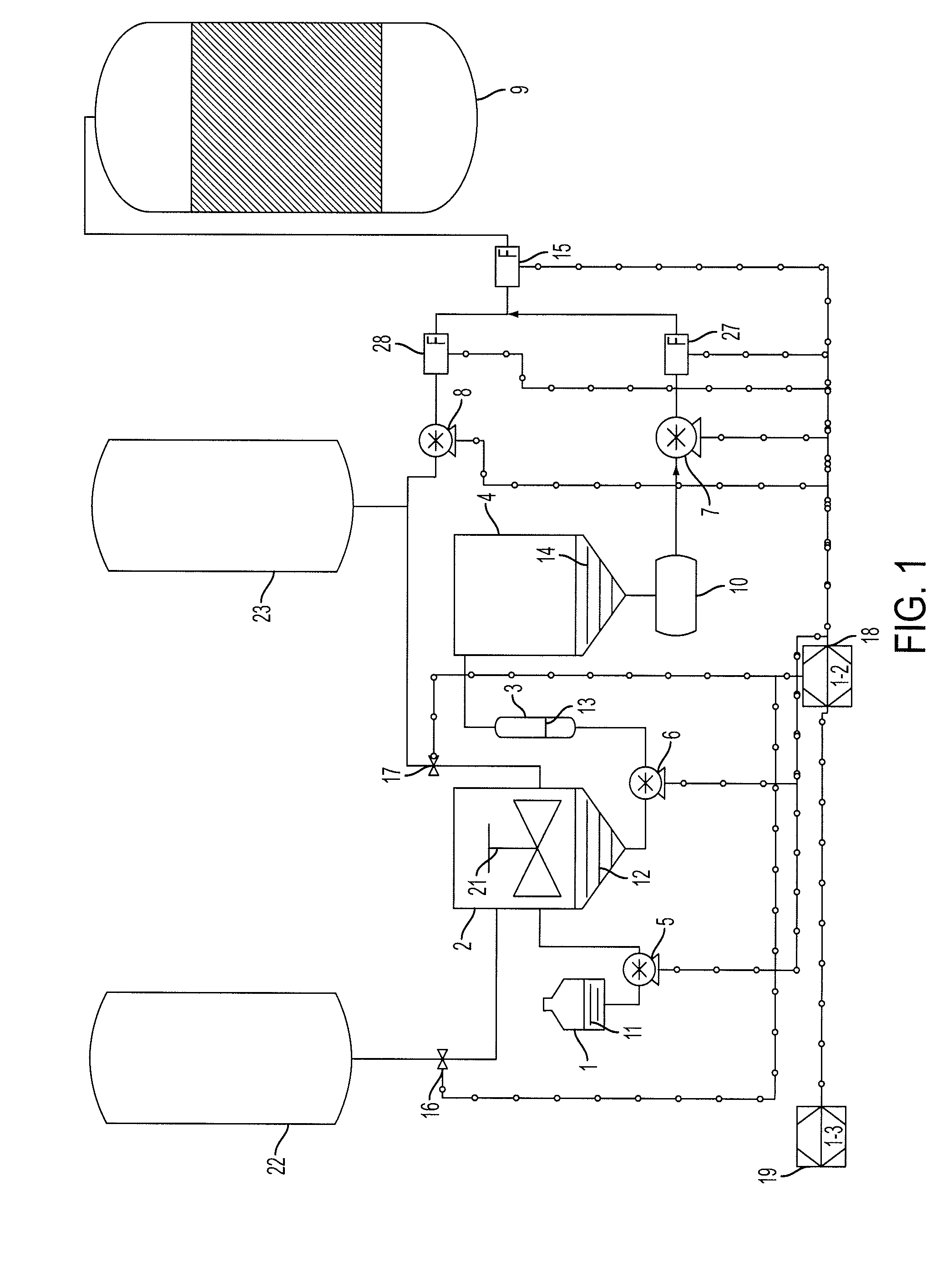Method for reducing costs of enzymes in biorefinery
- Summary
- Abstract
- Description
- Claims
- Application Information
AI Technical Summary
Benefits of technology
Problems solved by technology
Method used
Image
Examples
example 1
[0034]A fuel ethanol plant purchases glucoamylase, an enzyme that hydrolyses maltodextrins, from a commercial enzyme supplier. Glucoamylase (70 Gallons) is dosed into a 510,000 Gallon fermenter over 6 hours, (rate=735 mL / min) to hydrolyse maltodextrin from corn and / or sorghum to glucose. Yeast in the fermenter metabolize the glucose, one of the by-products of said metabolism being ethanol. In subsequent production steps the ethanol is distilled and concentrated to produce fuel ethanol. Glucoamylase that has a high activity can produce glucose in the fermenter too quickly for the yeast to metabolize said glucose efficiently. The result is a fermenter containing high concentrations of glycogen and lower than optimal concentrations of ethanol. As a result, commercial enzyme producers formulate glucoamylase solutions that have relatively low activity. These enzymes are shipped, usually via transport trailers, from central enzyme production locations. In many cases, the enzyme must be sh...
PUM
| Property | Measurement | Unit |
|---|---|---|
| Fraction | aaaaa | aaaaa |
| Fraction | aaaaa | aaaaa |
| Flow rate | aaaaa | aaaaa |
Abstract
Description
Claims
Application Information
 Login to View More
Login to View More - R&D
- Intellectual Property
- Life Sciences
- Materials
- Tech Scout
- Unparalleled Data Quality
- Higher Quality Content
- 60% Fewer Hallucinations
Browse by: Latest US Patents, China's latest patents, Technical Efficacy Thesaurus, Application Domain, Technology Topic, Popular Technical Reports.
© 2025 PatSnap. All rights reserved.Legal|Privacy policy|Modern Slavery Act Transparency Statement|Sitemap|About US| Contact US: help@patsnap.com


